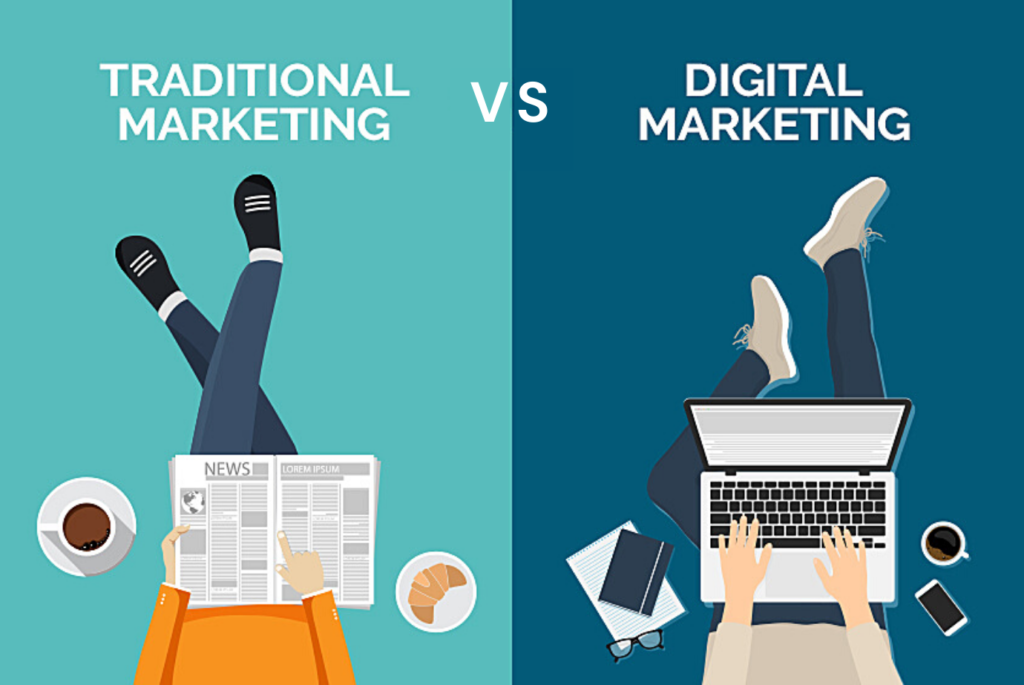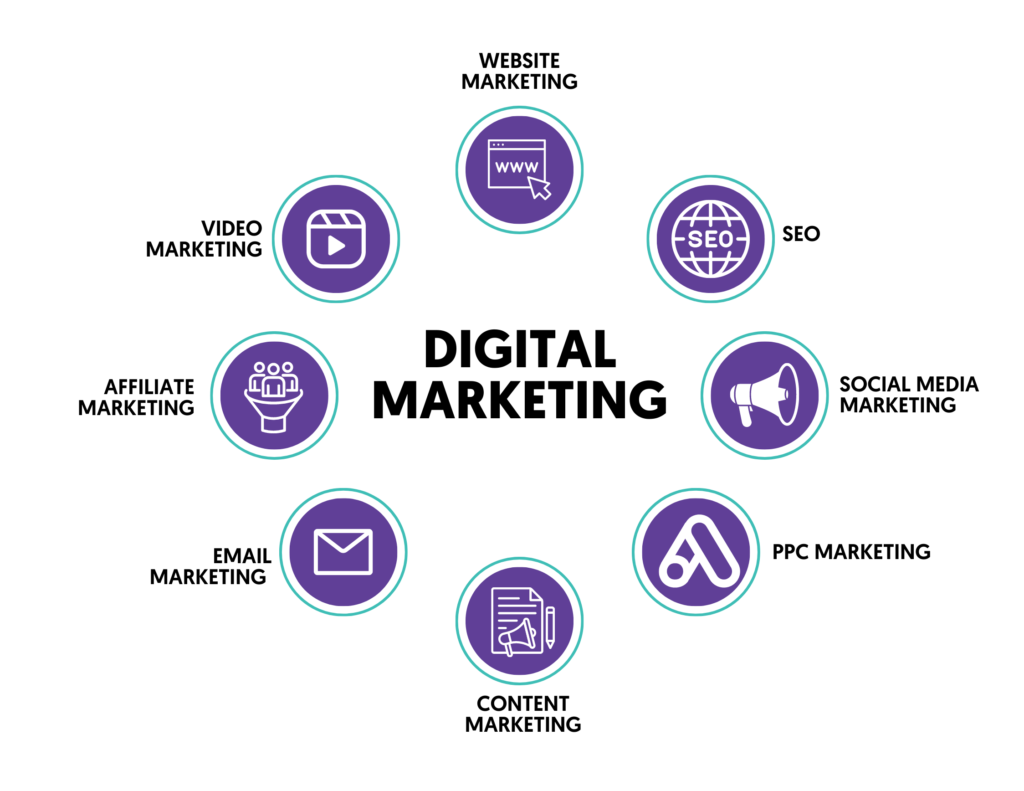Table of Contents
ToggleTraditional Marketing vs. Digital Marketing: A Comprehensive Comparison
Introduction
Marketing is the backbone of any successful business. Over the years, marketing strategies have evolved significantly, shifting from traditional methods to powerful digital techniques. While traditional marketing still holds value, digital marketing has emerged as a dominant force in the modern business landscape. This blog explores the differences, advantages, and strategies of both marketing types to help you make informed decisions for your business growth.

What is Traditional Marketing?
Traditional marketing refers to conventional advertising methods that existed before the rise of the internet. These include:
-
- Print Media: Newspapers, magazines, brochures, and flyers.
-
- Broadcasting Media: Television and radio advertisements.
-
- Outdoor Marketing: Billboards, banners, and posters.
-
- Direct Mail: Letters, postcards, and catalogs sent to potential customers.
-
- Telemarketing: Phone calls to reach potential clients.

Pros of Traditional Marketing
-
- Wide Reach: Ideal for targeting local audiences through newspapers, TV, or billboards.
-
- Tangible Impact: Print media offers something physical that audiences can hold and remember.
-
- Established Trust: Traditional methods like TV and radio often build greater trust among older demographics.
Cons of Traditional Marketing
-
- High Cost: TV ads, billboards, and print media can be expensive.
-
- Limited Interaction: Customers cannot engage directly with the content.
-
- Difficult Tracking: Measuring ROI (Return on Investment) is often challenging.
What is Digital Marketing?
Digital marketing refers to promoting products or services using online platforms. Popular digital marketing channels include:
-
- Search Engine Optimization (SEO): Improving website ranking on search engines.
-
- Content Marketing: Creating valuable content to attract and engage users.
-
- Social Media Marketing: Platforms like Facebook, Instagram, and LinkedIn.
-
- Email Marketing: Sending personalized emails to potential clients.
-
- Pay-Per-Click (PPC) Advertising: Paid ads on search engines or social media.
-
- Influencer Marketing: Partnering with influential individuals to promote products.

Pros of Digital Marketing
-
- Cost-Effective: Digital campaigns are often more affordable than traditional ads.
-
- Targeted Audience: Advanced tools allow precise audience targeting based on demographics, behavior, and interests.
-
- Measurable Results: Analytics tools provide insights into campaign performance.
-
- Global Reach: Digital marketing can reach a worldwide audience effortlessly.
Cons of Digital Marketing
-
- High Competition: Requires creativity and strategic efforts to stand out.
-
- Constant Evolution: Digital trends and algorithms change frequently.
-
- Technical Knowledge: Effective campaigns often demand specialized skills.
Key Differences Between Traditional and Digital Marketing
| Aspect | Traditional Marketing | Digital Marketing |
|---|---|---|
| Cost | Higher investment for TV, radio, or print ads | More budget-friendly with PPC and social media ads |
| Reach | Localized targeting with limited global reach | Can target both local and international audiences |
| Interaction | One-way communication (e.g., TV ads) | Two-way engagement (e.g., comments, likes, shares) |
| Tracking | Difficult to measure ROI accurately | Advanced analytics tools provide precise tracking |
| Flexibility | Requires significant planning and resources | Easy to modify campaigns instantly |
| Speed | Slower implementation | Instant campaign setup and launch |
Which Marketing Strategy is Best for Your Business?
Choosing between traditional and digital marketing depends on several factors:
-
- Target Audience: If your audience is older or not tech-savvy, traditional marketing may be more effective. Conversely, digital marketing works well for younger, internet-savvy demographics.
-
- Budget: Businesses with limited funds may prefer digital marketing for its affordability and measurable results.
-
- Business Type: Local shops may benefit from traditional methods like flyers and billboards, while e-commerce brands thrive with digital strategies.
Combining Traditional and Digital Marketing for Maximum Impact
The most effective marketing strategies often combine both traditional and digital methods. For example:
-
- Use Billboards for Brand Awareness: Combine it with social media campaigns to enhance visibility.
-
- Promote TV Ads Online: Upload TV commercials to YouTube and social media platforms for extended reach.
-
- Direct Mail with QR Codes: Add QR codes to brochures that lead customers to your website or landing page.
Future Trends in Marketing
To stay ahead, businesses must adapt to evolving trends. Key future trends include:
-
- AI Integration: Using artificial intelligence for personalized marketing.
-
- Voice Search Optimization: Optimizing content for voice assistants like Alexa and Siri.
-
- Interactive Content: Quizzes, polls, and interactive videos to boost engagement.
-
- Sustainability Marketing: Promoting eco-friendly practices to attract conscious consumers.
Conclusion
Both traditional and digital marketing offer unique advantages. While traditional marketing builds trust and offers tangible results, digital marketing provides cost-effective, targeted solutions with measurable outcomes. By understanding your audience and business goals, you can craft a strategy that blends both methods for optimal success.
